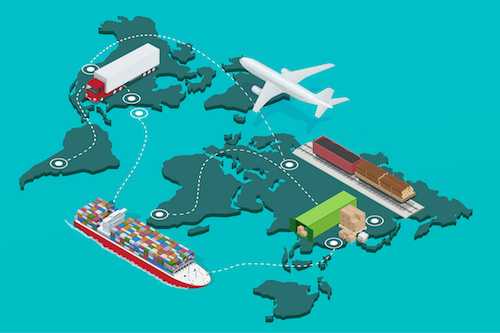We live in a world of globalization and international trade is going through major changes in several dimensions, changes that will redefine the way we manage borders in the future.
We are seeing trade wars, more elements of protectionism, environmental activism and the reclaiming of national borders and trade policies – like in the case of Brexit. However at the same time we trade and travel more than ever.
While we know that international trade is good and one of the best ways to foster development in our societies, create growth and fight poverty, we also know that International Cross-Border Crime is more organized and dangerous than ever, not acknowledging any national borders and using the fact that we are still organized by our national borders.
How do we then “take back control over our borders”? Is it even possible in a time of globalism? Is it even desirable? Or can we meet the requirements of a new world in a different and more efficient way?
First of all, our perception of borders is shaped from the borders we have today, and these borders were designed, developed and implemented many years ago. When we design new borders today, we are doing so in a completely different environment.
Trade has changed tremendously over the last five to ten years. Today the border is not a line on the ground but a series of transactions in interactive and integrated international value chains moving goods through advanced global supply chains. The national border used to be our first frontier and our first defense line but today it is our last.
This means that we do not produce goods in one place and sell it somewhere else, we produce everywhere and sell everywhere. It is a totally different world than before. The adding complexity of other changes like the extremely fast growth of e-commerce, makes the challenge larger than ever. The good news is that there are solutions. The techniques and technology of today and tomorrow offer different solutions.
We are starting to implement smarter borders. The idea of the smart border is to move Customs and other border formalities away from the border, to be done electronically – before and after the actual border crossing. To do so we need to make supply chains and value chains safe, secure and predictable.
This model demands the involvement of all stakeholders in the entire chain and there is a need for an element of trust between the different parties. On the other hand, when that trust is established through structured and well-defined models, we can also create trusted trade lanes that are cost-efficient for everybody involved while at the same time compliance increases and risk are kept at a minimum.
We talk about compliance management, which today together with risk management, is the overarching control methodology used by agencies involved in international cross border trade.
An international supply chain can’t anymore be managed and monitored efficiently in a traditional way with repeated stand-alone checks at each national border. In fact, this is not how the international supply chain works even today.
The international standard for Customs compliance management is the Authorized Economic Operator (AEO) concept regulated in the SAFE Framework of Standards from the World Customs Organization. The international standard also regulates how national AEO programmes can be interlinked for the supply chain through the Mutual Recognition Agreement (MRA) mechanism.
There are today almost one hundred countries, representing a large majority of global trade, with operational AEO programmes and Trusted Trader programmes. We see a new AEO paradigm enter into force through broader, holistic and more dynamic Trusted Trader Programmes (TTP) that are in line with the international standard. I have written about this trend in an academic article in the World Customs Journal*.
This global trend is especially interesting from a border management perspective. The idea behind compliance management is that all stakeholders of the international supply chain should collectively cooperate to minimize risks of the global supply and value chain. This connects people with goods and border management in new ways.There are a number of countries which have over the last few years designed, developed and implemented new modern Trusted Trader Programmes.
Another example is Brexit. When the United Kingdom leaves the largest and most integrated Customs Union and Customs Territory (Single Market), the European Union, a Customs border will emerge. This means that the United Kingdom becomes a third country and that there will be Customs formalities on both sides of the border.
Since the volumes of goods shipped between EU and UK are extremely high, and since there are no border infrastructure between EU and UK today, the new border will have to be designed as a new generation border – a Smart Border 2.0/2.1, utilizing the most modern Customs techniques and technology available today, including AEO. The technology needed is no unicorn, it exists in operations already today.
We will soon see new operational Smart Borders all around the world. So how can companies involved in international trade prepare for this new paradigm and use the developments to the advantage of trade and new business?
The best way is to make Customs a strategic topic within the company, seek strategic partners for the more advanced services and to make sure to have well educated and trained trade and Customs professional within the organization. The future belongs to smart borders and companies ready to use the new trusted trade lanes that are emerging.
Lars Karlsson
CEO & MD KGH Global Consulting KGH Customs Services
*Back to the future of Customs: A new AEO paradigm will transform the global supply chain for the better: http://worldCustomsjournal.org/archive/volume-11-number-1-march-2017/

